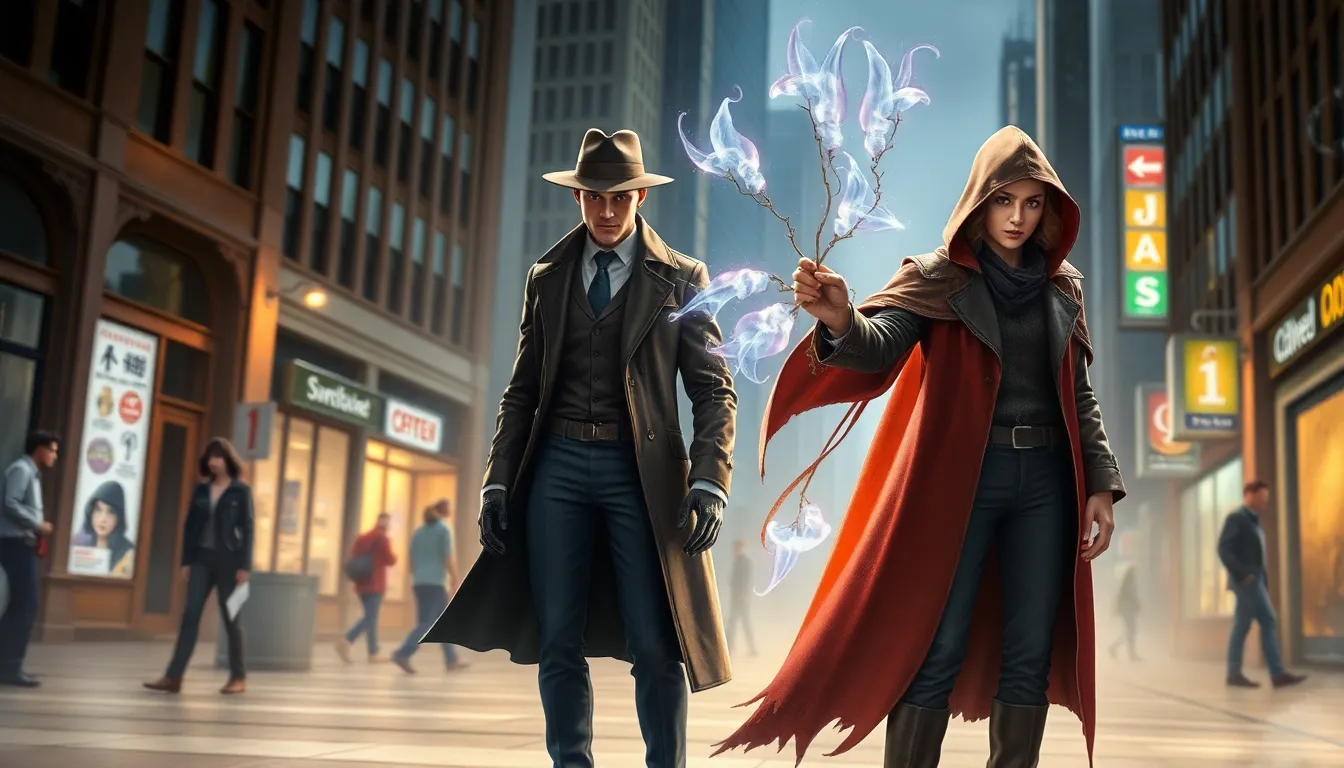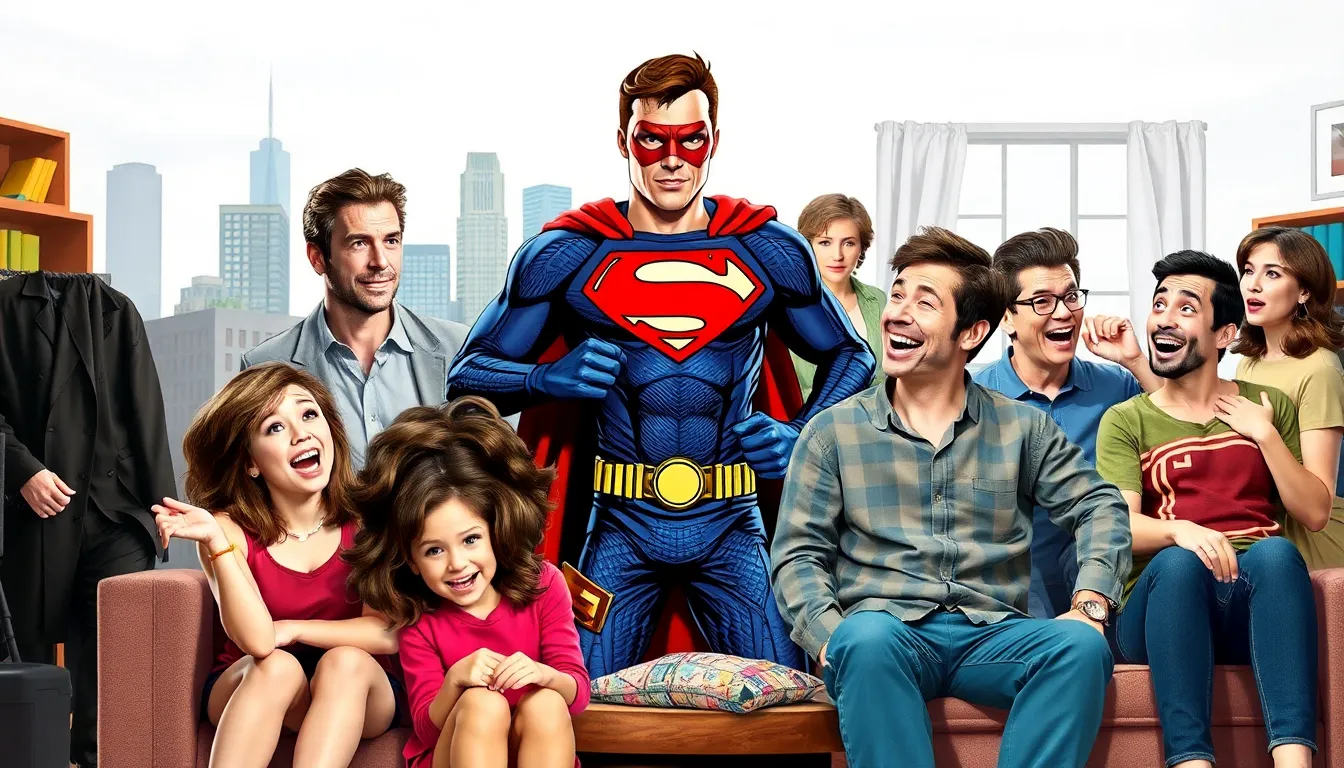Table of Contents
ToggleImagine your favorite characters from different shows suddenly teaming up to save the day—or maybe just to share a pizza. Network show crossovers bring together beloved heroes and quirky personalities in a delightful mashup that fans can’t resist. Whether it’s a crime-fighting duo solving mysteries or sitcom stars navigating an unexpected family reunion, these crossovers spark excitement and laughter.
Overview Of Network Show Crossovers
Network show crossovers captivate audiences by bringing together beloved characters from distinct series. Fans anticipate the unexpected interactions and dynamic storylines that these events create. Collaborations can feature characters from crime dramas teaming up with those from sitcoms. This blend leads to unique scenarios that entertain various viewer demographics.
Viewers often enjoy seeing how characters navigate different worlds. For example, a hard-boiled detective might find themselves in a lighthearted family environment. Networks design these crossovers to boost ratings and strengthen brand loyalty among audiences. High-profile crossovers can generate intense discussions online, enhancing engagement across social media platforms.
Scheduling these events can present challenges for showrunners. Coordinating story arcs requires careful planning to ensure continuity and coherence. Fans appreciate when plot developments respect the established lore of each character. Crossovers can also introduce new plot lines, providing fresh material and igniting viewer interest.
Timing plays a crucial role in crossover success. Cable shows often align with key seasonal events, capitalizing on heightened viewer anticipation. Ratings data indicates that well-timed crossovers can lead to increased viewership for both participating shows. Effective marketing strategies can further amplify excitement surrounding these episodes.
Network show crossovers serve as a powerful tool for networks to attract and retain audience attention. By uniting familiar faces in innovative ways, they enrich the television landscape and foster creative collaborations across genres.
Types Of Network Show Crossovers

Network show crossovers come in various forms, each showcasing unique collaborations that captivate audiences. Two prominent types include cross-genre and franchise crossovers.
Cross-Genre Crossovers
Cross-genre crossovers blend different television styles, making for engaging content. For instance, a crime drama might intersect with a fantasy series, creating unexpected alliances between characters. Fans enjoy watching detectives solve cases alongside magical beings. These combinations can introduce fresh storytelling approaches while enhancing humor and drama. Successful examples include Buffy the Vampire Slayer teaming up with Angel and The Flash appearing on Arrow. Such pairings excite viewers who appreciate the creativity that results from blending contrasting genres and audiences.
Franchise Crossovers
Franchise crossovers unite multiple shows within the same universe, leveraging established fanbases. Characters from a popular series may appear in another to enrich the storyline. Crossovers like Chicago Fire, Chicago P.D., and Chicago Med demonstrate this concept effectively. Each show features overlapping storylines, allowing characters to interact in unique situations. These shared narratives not only boost viewership but also foster stronger connections among fans. Significant events, such as the Star Wars or Marvel franchises, can create a unified experience that enhances anticipation and excitement.
Notable Network Show Crossovers
Network show crossovers create memorable moments in television, often leading to significant buzz among fans. These collaborations showcase characters from different series engaging in unique storylines.
Iconic Examples
Several crossovers have left lasting impressions on viewers. One standout moment occurred when “The Flash” crossed over with “Arrow,” blending superhero action with intense drama while captivating audiences. Another notable example features “Friends” and “The One with Ross’s Sandwich,” which humorously integrated elements of popular culture into the show’s storyline. The “Chicago” franchise, uniting “Chicago Fire,” “Chicago P.D.,” and “Chicago Med,” exemplifies franchise crossovers, strengthening viewer loyalty through shared characters and narratives.
Impact On Viewership
Crossover events frequently spike viewership numbers. Many networks report increased ratings during crossovers, driven by audiences’ excitement to see beloved characters unite. For instance, the “Crisis on Infinite Earths” event across the Arrowverse led to significant viewer engagement, showcasing the power of strategic timing. These events build anticipation and attract new viewers, ultimately enhancing overall ratings and brand loyalty. By leveraging established fanbases, networks create fertile ground for future crossovers, driving sustained interest in their programming.
The Process Behind Crossovers
Network show crossovers require meticulous coordination and creativity. They involve various stakeholders, ensuring a seamless blend of different series’ narratives.
Collaboration Between Networks
Networks often collaborate to facilitate crossovers. Sharing resources, they enhance storytelling possibilities. Mutual benefits arise, as increased viewership on one show can positively impact another. Successful partnerships, such as the crossover between “Supergirl” and the Arrowverse, showcase effective collaboration. New promotional strategies emerge, allowing networks to attract diverse audiences. Viewers enjoy the expanded universe created through these alliances. Collaborative efforts also generate buzz across social media platforms, increasing audience engagement.
Writing And Production Challenges
Writing and producing crossovers present unique challenges. Maintaining character integrity while developing new dynamics is vital. Showrunners must consider viewer expectations and established lore. Scheduling becomes intricate, requiring careful alignment of timelines. Diverse styles and tones of each series complicate the narrative cohesion. Writers often brainstorm collaboratively, ensuring a consistent voice despite varied backgrounds. Production teams face logistical hurdles, from coordinating cast schedules to managing budgets. Ultimately, the success of crossovers hinges on thorough planning and effective communication.
Audience Reception And Critical Response
Audience reception of network show crossovers often showcases varied reactions, with fans eagerly embracing the unique collaborations. Critical response frequently highlights the creative risks involved, particularly when blending established characters from different series. Social media buzz amplifies discussions, revealing how viewers engage with both the excitement and skepticism these crossovers provoke.
Ratings typically experience a noticeable increase during crossover events. For instance, major franchises regularly report spikes in viewership, particularly when crossovers tap into popular characters or thematic elements. Analysts have documented metrics indicating that events like “Crisis on Infinite Earths” in the Arrowverse captured significant viewer interest, leading to overall brand loyalty growth.
Audience engagement also manifests through fan theories and speculation before major crossover events. Fans actively discuss potential storylines, character dynamics, and possible outcomes, creating a community around these events. The integration of various styles often garners praise for innovative storytelling. Critics acknowledge that when executed well, such collaborations can elevate narratives beyond individual series arcs.
Conversely, some crossovers receive criticism for perceived execution flaws or lack of character development. Viewers sometimes express disappointment when a crossover does not meet their expectations for character interaction or plot coherence. Balancing the distinct voices and styles of multiple shows presents ongoing challenges for showrunners.
Through innovative strategies and audience insights, networks can navigate these complexities. Careful planning and attention to viewer feedback significantly enhance the crossover experience. Ultimately, network show crossovers remain a compelling avenue for creative storytelling, cultivating lasting connections between fans and their favorite series.
Network show crossovers continue to be a thrilling aspect of television that captivates audiences and fosters community engagement. By blending characters and storylines from different series, these events create unique viewing experiences that resonate with fans. The strategic planning and collaboration required for successful crossovers highlight the dedication of showrunners and networks to deliver quality entertainment.
As fans eagerly anticipate future collaborations, the potential for innovative storytelling remains limitless. With each crossover, networks not only boost ratings but also strengthen viewer loyalty, paving the way for even more ambitious projects. The excitement surrounding these events ensures that crossover culture will remain a staple in the television landscape for years to come.




